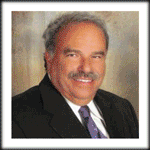“Happy Endings” by Mort Laitner

Fort Lauderdale International Airport, I scanned the sky, focusing on the clouds as my mind imprinted words on those white pillows:
Viet Cong, B-52s, Hanoi Hilton, the draft, Gulf of Tonkin, Tet Offensive, My Lai Massacre, Green Berets, Agent Orange, PSD and Saigon.
Fifty-year-old memories rushed by my eyes as if filmed in 8MM.
The irony hit me like an iron hammer and a steel sickle.
Fifty years ago, I fought going to Vietnam and now I was voluntarily flying there. The yin and yang of life—I had come full circle and so had our nations.
So what had I learned?
I first learned about Vietnam in geography class in elementary school, My class studied this snake or dragon-shaped nation with its water buffalos, bicycle-driven rickshaws, farmers wearing conical hats, rice patties, pagodas and Buddhist temples.
I never thought I would get to Southeast Asia.
Fifty years ago, at the University of Miami, I studied religion and learned of the Kama Sutra, Karma, yin-yang, Buddhism, Hinduism and the Church of G-d-Save-My-Ass-From-This-Horrible-War also known as the Religion-of-How-to-Avoid-Being-Drafted.
I learned to try to balance (the process of harmonization) my life on that black and white border of the yin-yang circle—between sadness and happiness, love and hate, courage and cowardice. But I often invaded or retreated into the territory of the absence of all colors or the combination of all them.
Now I stood In a temple perfumed with incense and touched the large toe of a 150 foot long reclining Buddha.
In another temple, I lit incense and prayed into the faces of the Good Buddha and the Evil Buddha— for as a child I learned Karma (not Santa Claus) was the great enforcer—the punisher of all evil doers.
I lit those perfumed memory sticks, the same ones I once used to cover the smell of Mary Jane in my UM dorm room, Quickly they burned in red, orange, blue and yellow flame as a wind pulled their smoke toward the heavens and left ashes of the cremated on the temple floor.
As a child of the Sixties, I read Herman Hesse’s, “Siddhartha”. Eastern religions were all the rage. If you had not read Hesse, “Why were you in college?”
I, like Siddhartha, searched for self discovery (the meaning of life) and also searched for a courtesan who would teach me the art of love.
Yes, love is an art and not a science.
Fifty years ago, I studied the positions of the Kama Sutra in the form of an artful day-glow poster glued to the wall of my UM dormitory room. The poster proclaimed, “I am a player”.
Now in Vietnam, I went to an ancient Kama Sutra temple, where carved life-sized figures displayed those positions as an educational tool for their followers. Here was a temple I could consider joining.
But Hesse was right—mastering the art of love required the services of a courtesan— not posters, nor books, nor films.
For 50 years, I studied the war through the cold electronic eyes of Walter Cronkite, the New York Times, Ken Burns and through the warm eyes of returning veterans.
For over a decade, I watched the CBS Nightly News, receiving snippets of film showing:
dead and wounded GIs;
incendiary bombs falling out of Boeing’s B-52 Stratofortress;
explosions in jungles;
American coffins returning for state-side funerals;
and listened to talk of the war ending by Christmas.
I heard on a daily basis the names, ranks and hometowns of our fallen heroes.
I heard the media say all 58,220 names.
I did not hear the names of any of the two million Vietnamese our B-52s cremated.
But I feared war and death and dismemberment.
Newsweek and Time printed unforgettable photos of war and death and dismemberment:
That screaming naked, Vietnamese girl, covered in flaming napalm, running down her hometown street.
Little did I know or understand when I saw that photograph, that our collective karma looked and smelled like we were destined to taste that young girl’s burnt flesh in one humiliating meal of defeat.
That split-second photo, when a bullet entered the head of a Viet Cong prisoner from the pistol of a South Vietnamese soldier—the yin and yang of life and death.
That female Kent State student, on her knees, screaming with her arms raised toward G-d as four of her classmates lay dead on Ohio soil.
On the plane, I studied the wide variety of movies the airline offered. But they did not offer Apocalypse Now or Platoon or Full Metal Jacket—not even John Wayne’s film Green Beret.
As the plane touched down in Ho Chi Minh (formerly Saigon) Airport, Staff Sargeant Barry Sadler’s words to The Ballad of The Green Berets silently crossed my lips:
Fearless men who jump and die
Men who mean just what they say
The brave men of the Green Beret
These are men, America’s best
One hundred men will test today
But only three win the Green Beret.
Uncle Sam needs your help again.
